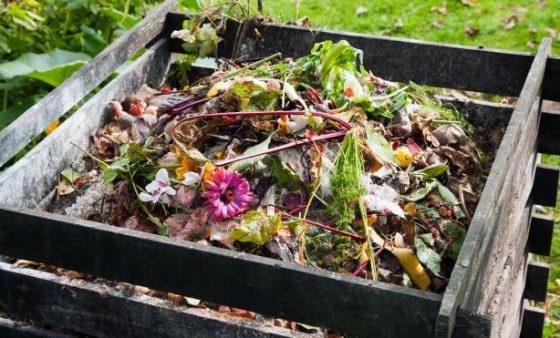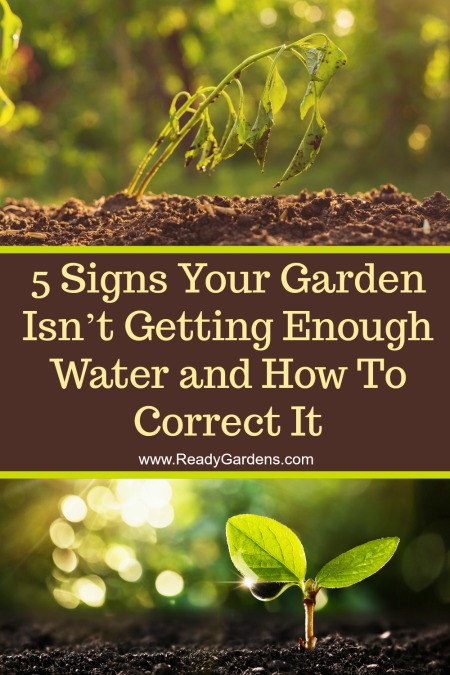If the plants in your garden are not getting enough water, then they are also not getting enough nutrients to grow. Underwatering your plant is one of the worst things that can happen to your garden, but there are a few simple ways to tell if this is the case and we’ve got a few suggestions to make sure it never happens again!
These are the signs that your garden is in need of more water:
- Yellowing or dried leaves at the bottom of the plant
- Roots will start showing up at the surface in search for more water
- Cracked soil
- Leaves and/or fruit dropping
- Plant death
If you have experienced these signs, remember that it’s also important to first take into account the health of your soil. Healthy soil will hold more water and ensure your plants will get the proper nutrients needed to sustain themselves. Here are some of the ways to improve soil so it holds more water:
Avoid planting your garden in a sandy area. The natural drainage of sand will leave to little moisture for the plants.
 When you prepare the garden site with a layer or two of healthy soil. Make sure to take a few pH tests if need be and put your compost to work! I love incorporating the lasagna-style or sheet mulch gardening with the square foot gardening method. This is the best opportunity to introduce compostables to the soil. Compost and soil additives like chopped leaves, green sand, oyster shell, and Epsom salt can all add an abundance of nutrients to the soil! Tilling and mulching your gardens during the warmest summer months will do wonders for growing plants and will encourage a healthier soil environment.
When you prepare the garden site with a layer or two of healthy soil. Make sure to take a few pH tests if need be and put your compost to work! I love incorporating the lasagna-style or sheet mulch gardening with the square foot gardening method. This is the best opportunity to introduce compostables to the soil. Compost and soil additives like chopped leaves, green sand, oyster shell, and Epsom salt can all add an abundance of nutrients to the soil! Tilling and mulching your gardens during the warmest summer months will do wonders for growing plants and will encourage a healthier soil environment.
Turn Trash Into Treasure: The Easy Way To Make A Compost Pile Or Bin
You may also want to try ollas, an ancient low-tech low-cost irrigation system. It’s a simple unglazed clay pot that is buried in the ground near plants with the neck of the pot above ground. They typically have a wide, bulb-like base with a narrow neck. The porous walls of the olla allow water to wick to the plant’s root zone. They seep water when the plants and surrounding dirt need it. They act as a moisture equalizer. The unglazed clay pots dispense water only when needed. Basic physics here. Ollas are great because they water the roots instead of the surface of your garden or raised bed preventing soil compaction and weed growth. (Added bonuses!) Ollas is also sustainable as it reduces your water usage by 50 to 70% because you are only watering your plants’ roots. You can easily learn to build your olla over at Global Bucket.
You could also try using water timers. This is an excellent option for many who don’t have a lot of extra time. A lot of people who put up Christmas lights use timers and the same idea can be applied to your garden. The timers will turn the water on and off at specific times and alleviate the stress of having to remember to water the garden. Drip hose or drip tape can be used to make sure the water seeps directly into the soil right where your plants are growing. That is a better option than a sprinkler, especially during those searingly hot days.
 Another option to give a try is planting native plants such as sunflowers, lilies, salvia, flowering herbs like yarrow, rosemary, and lavender. The deep root systems of many native Midwestern plants increase the soil’s capacity to store water. Because the root system of these plants goes deep, they can also significantly reduce water runoff and, consequently, flooding. These plants don’t require any fertilizer either, and they’ll offer a beautiful landscape and a wonderful bit of eye-catching color.
Another option to give a try is planting native plants such as sunflowers, lilies, salvia, flowering herbs like yarrow, rosemary, and lavender. The deep root systems of many native Midwestern plants increase the soil’s capacity to store water. Because the root system of these plants goes deep, they can also significantly reduce water runoff and, consequently, flooding. These plants don’t require any fertilizer either, and they’ll offer a beautiful landscape and a wonderful bit of eye-catching color.
Gardening is often not the easiest thing to undertake, but our goal is to help you understand that even though it may not come easy, there is always a solution to any problem!


Plants that are wilting is a sure sign they need more water. Certain plants have shallow roots systems and what they need is more water or mulch to hold the water and avoid drying out the soil. Put a 2″ to 3″ layer of mulch around your plants to hold moisture in the ground.